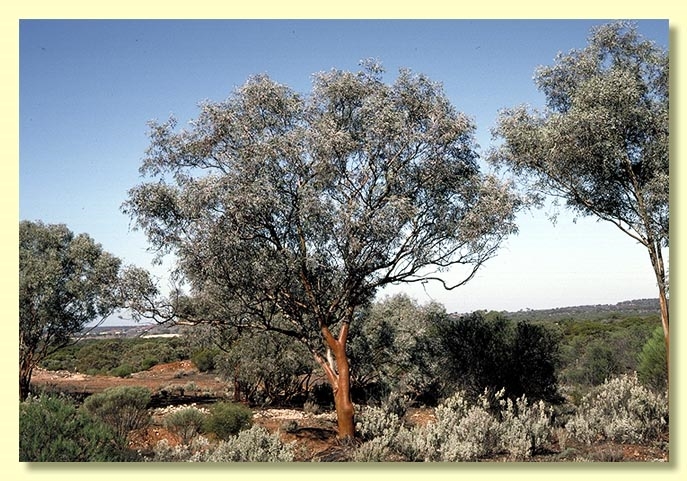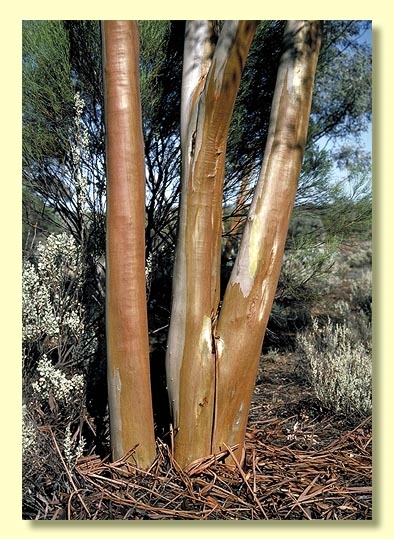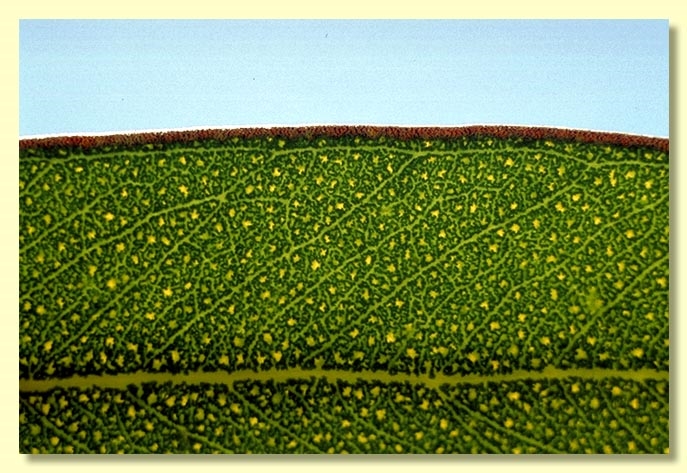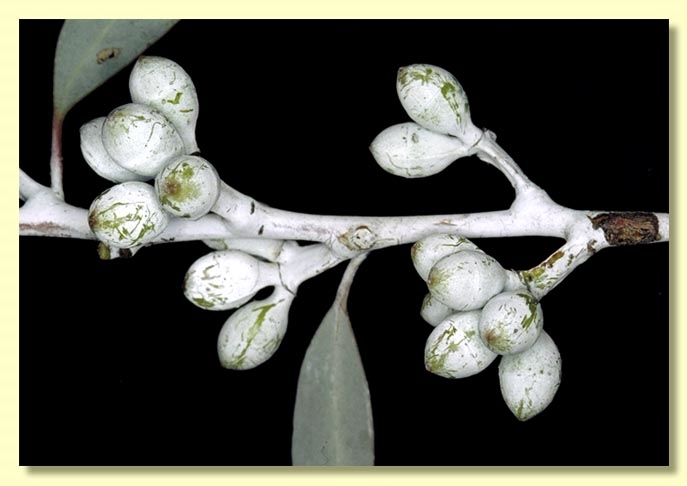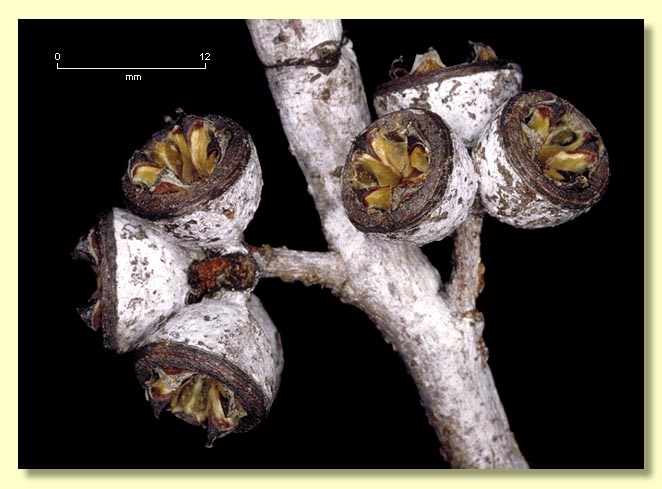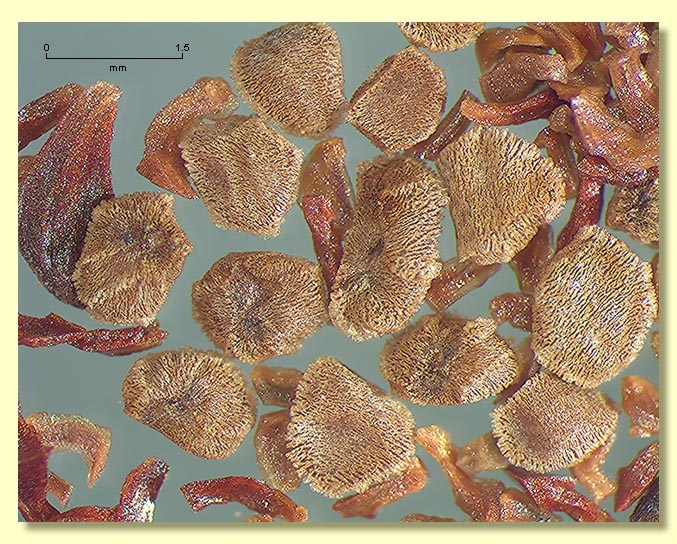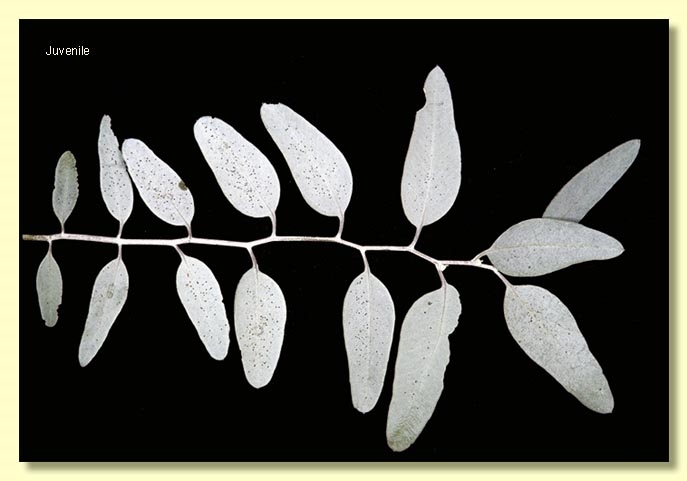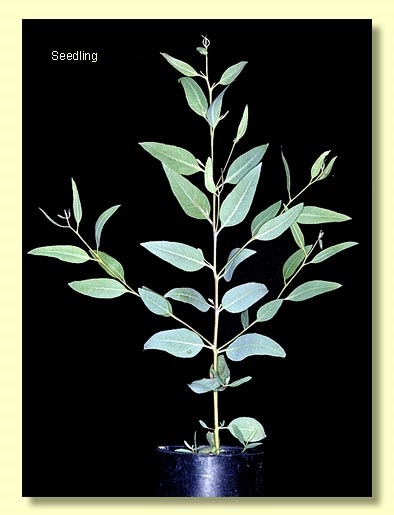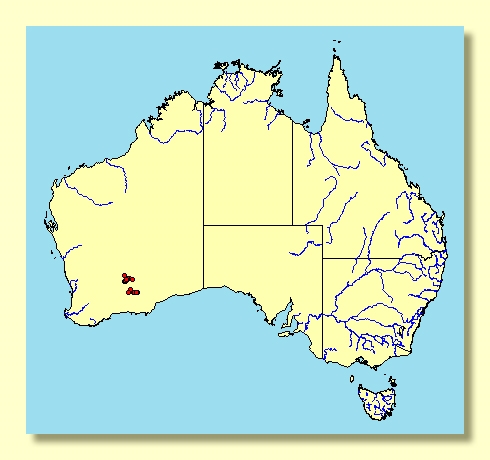Euclid - Online edition
Eucalyptus campaspe
Eucalyptus | Symphyomyrtus | Bisectae | Glandulosae | Contortae
Bark smooth throughout, shiny, greenish grey to yellow-brown, red-brown or coppery.
Branchlets copiously white-waxy, oil glands present in pith.
Juvenile growth (coppice or field seedlings to 50 cm): stems rounded in cross-section, glaucous; juvenile leaves always petiolate, opposite for 1 to 4 nodes then alternate, lanceolate-ovate, 5–8 cm long, 1.5–3.5 cm wide, glaucous.
Adult leaves alternate, petioles 0.7–2.5 cm long; blade lanceolate, 7–12 cm long, 0.8–2.5 cm wide, base tapering to petiole, margin entire, apex pointed, concolorous, dull, glaucous or grey to grey-green weathering to glossy, green, side-veins acute, reticulation usually moderate to dense and broken, intramarginal vein close to margin, oil glands highly irregular in shape, island or sometimes obscure.
Inflorescence axillary unbranched, peduncles flat, broadening apically, 0.5–1.5 cm long, buds 7 per umbel, shortly pedicellate (pedicels 0.1–0.4 cm long). Mature buds ovoid and obese (0.9–1.2 cm long, 0.6–1 cm wide), glaucous, scar present, operculum obtusely to acutely conical, stamens inflexed to varying degrees, anthers narrowly oblong, versatile, sub-basifixed, dehiscing by longitudinal slits, style long and straight, stigma blunt, locules 4(5), the placentae each with 8 vertical rows of ovules. Flowers white.
Fruit shortly pedicellate or sessile (pedicels 0–0.3 cm long), cupular to hemispherical or broadly and shallowly obconical, 0.5–1 cm long, 0.8–1.5 cm wide, disc level, valves 4(5), exserted.
Seeds mid-brown, 1–2 mm long, ovoid or flattened-ovoid, dorsal surface narrowly and closely fissured, margin closely toothed, hilum ventral. (Seedcoat often referred to as being honey-combed.)
Cultivated seedlings (measured at ca node 10): cotyledons Y-shaped (bisected); stems more or less square in cross-section, glaucous, sometimes warty; leaves always petiolate, opposite for 4 to 5 nodes then alternate, lanceolate, 4.5–7 cm long, 1–2.5 cm wide, dull, grey-green to slightly glaucous.
Flowering has been recorded in April, August and December.
A small mallet endemic to the central goldfields of Western Australia, from Coolgardie to Kalgoorlie. The bark is always smooth, yellow-green, grey, or in season, rich coppery. The crown is conspicuously silver-grey while the individual adult leaves are glaucous or grey to grey-green but ultimately weathering to glossy, green. Buds are in sevens on prominently flattened peduncles, and buds and fruits are glaucous.
Eucalyptus campaspe belongs in Eucalyptus subgenus Symphyomyrtus section Bisectae subsection Glandulosae because the buds have two opercula, the cotyledons are bisected and the branchlets have numerous oil glands in the pith.
Within this subsection E. campaspe belongs to a small well known group, the gimlets (series Contortae), a group notable for the slender fluted, twisted shiny trunks The gimlets are further recognised by very irregular island oil glands in the leaves and irregularly and deeply fissured seed-coats.
The silver-greyish crown colour distinguishes E. campaspe from all the other gimlets. Both E. campaspe and E. ravida have conspicuously waxy branchlets but the latter has an olive-green crown with only the new growth glaucous, and smaller buds and fruit. The other gimlet species, E. creta, E. diptera, E. effusa, E. salubris, E. terebra and E. tortilis are non-glaucous.

